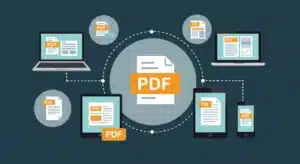
Presentation Styles That Turn Nerves into Natural Flow
Presenting can be a daunting task for many, often leading to anxiety and uncertainty. However, the right presentation style can transform those nerves into a natural flow, making the experience enjoyable for both the presenter and the audience. This article explores various presentation styles that not only engage the audience but also enhance the presenter’s confidence and effectiveness.
Understanding Your Audience
Before diving into specific presentation styles, it’s crucial to understand the audience. Knowing their preferences, interests, and expectations can significantly influence the choice of style. For instance, a corporate audience may appreciate a more formal approach, while a group of educators might prefer a relaxed, interactive style. Understanding the demographic factors, such as age, profession, and cultural background, can also play a pivotal role in shaping the presentation’s tone and content. Tailoring your message to resonate with these aspects can foster a deeper connection and enhance the overall effectiveness of the communication.
Engaging with the audience starts with establishing a connection. This can be achieved through storytelling, humor, or relatable anecdotes. By doing so, the presenter creates an environment where the audience feels comfortable and open to participation, which is essential for a successful presentation. Moreover, incorporating visual aids, such as slides or videos, can further captivate the audience’s attention, making complex information more digestible and memorable. The use of interactive elements, like polls or quizzes, can also encourage active participation, transforming a passive listening experience into an engaging dialogue.
Identifying Audience Needs
Every audience is unique, and identifying their needs can help tailor the presentation accordingly. For example, sales teams, educators, and event organizers may require different approaches. A sales manager, like Jamie, for instance, might need to focus on high-conversion techniques, ensuring every question is addressed and every lead is captured effortlessly. Understanding the specific challenges and goals of the audience allows the presenter to frame their content in a way that speaks directly to those concerns, thereby increasing the relevance and impact of the presentation.
Utilizing tools such as AI-powered Q&A systems can significantly enhance audience engagement. These systems allow for real-time responses to questions, ensuring that no valuable insights are missed during the presentation. This technology not only streamlines the process but also allows presenters to focus on delivering their message with confidence. Additionally, incorporating feedback mechanisms, such as post-presentation surveys or live feedback tools, can provide invaluable insights into audience perceptions and areas for improvement. By actively seeking feedback, presenters can refine their approach for future engagements, ensuring that they continually meet the evolving needs of their audience.
Interactive Presentation Styles
One of the most effective ways to turn nerves into a natural flow is through interactive presentation styles. These styles encourage audience participation and create a dialogue rather than a monologue. By fostering an environment where the audience feels comfortable engaging, presenters can transform a potentially intimidating experience into a collaborative and enjoyable one.
Storytelling
Storytelling is a powerful tool in presentations. It captivates the audience’s attention and makes the content more relatable. By weaving personal stories or case studies into the presentation, the presenter can create an emotional connection with the audience, making the information more memorable. This technique not only enhances retention but also encourages empathy, allowing the audience to see the relevance of the information in their own lives.
Moreover, storytelling can be enhanced through audience participation. Asking the audience to share their experiences related to the story can foster engagement and make the presentation feel more like a conversation. This exchange can lead to unexpected insights and perspectives, enriching the overall discussion. Additionally, incorporating multimedia elements, such as images or videos that complement the narrative, can further immerse the audience in the story, making it even more impactful.
Q&A Sessions
Incorporating Q&A sessions throughout the presentation can also alleviate nerves. Instead of waiting until the end, presenters can invite questions at various points, making it a more dynamic experience. This approach not only keeps the audience engaged but also allows the presenter to gauge their understanding and adjust the content accordingly. By addressing questions in real-time, presenters can clarify complex points and ensure that the audience remains on the same page, which enhances the overall effectiveness of the presentation.
Utilizing AI-powered Q&A tools can further streamline this process. These tools can provide instant answers to audience questions, ensuring that the presenter remains focused on delivering their message without getting bogged down by unanswered queries. Furthermore, these tools can analyze audience questions to identify common themes or areas of confusion, allowing the presenter to refine their content for future sessions. This iterative feedback loop not only improves the current presentation but also enhances the quality of future engagements, making each interaction more valuable for both the presenter and the audience.
Visual and Multimedia Elements
Integrating visual and multimedia elements into presentations can significantly enhance engagement. This approach caters to different learning styles and keeps the audience’s attention focused on the content. By appealing to both visual and auditory senses, presenters can create a more immersive experience that resonates with a diverse audience, ensuring that key messages are not only heard but also felt.
Infographics and Visual Aids
Using infographics and visual aids can simplify complex information, making it easier for the audience to grasp key concepts. Visual elements not only enhance understanding but also make the presentation more appealing. Presenters should aim to strike a balance between text and visuals, ensuring that the slides complement rather than overwhelm the spoken content. For example, a well-designed infographic can distill a wealth of data into a single, digestible image, allowing the audience to quickly comprehend trends and relationships that might otherwise be lost in a sea of numbers.
Additionally, incorporating audience interaction through visual elements, such as live polls or quizzes, can further enhance engagement. This allows the audience to actively participate, making the presentation feel more collaborative. By utilizing tools like interactive whiteboards or audience response systems, presenters can gather real-time feedback, adjust their delivery on the fly, and foster a sense of community among attendees. This interactive approach not only maintains interest but also encourages deeper reflection on the material presented.
Video Clips and Demonstrations
Incorporating video clips or live demonstrations can add a dynamic element to presentations. These elements can break up the monotony of a traditional slide deck and provide real-world examples of the concepts being discussed. For instance, a sales manager might showcase a successful product demonstration, allowing the audience to see the product in action. Such demonstrations can serve as powerful testimonials, illustrating not just the functionality of a product but also its impact on users’ lives.
However, it’s essential to ensure that these multimedia elements are relevant and enhance the overall message. Presenters should avoid overloading their presentations with videos, as this can detract from the main points being conveyed. Instead, each video should be carefully curated and directly tied to the content at hand, ensuring that it serves a clear purpose. Additionally, presenters might consider using short clips that highlight key moments rather than lengthy segments, as this keeps the audience engaged and focused on the core message without losing momentum.
Utilizing Technology for Seamless Engagement
In today’s digital age, leveraging technology can significantly enhance the presentation experience. Tools that facilitate audience engagement can help presenters connect with their audience more effectively.
SMS Engagement Platforms
PresEngage transforms traditional presentations into interactive experiences. By allowing audience members to participate via SMS, presenters can eliminate barriers such as app downloads or logins, making it easier for everyone to engage. This frictionless participation encourages more audience members to ask questions and share feedback, enhancing the overall presentation experience.
Moreover, these platforms often include features such as real-time Q&A and automated lead capture, ensuring that presenters can focus on delivering their message while still addressing audience needs. This technology not only streamlines the presentation process but also provides valuable analytics for future improvements. The ability to see which topics generated the most questions can inform presenters about areas of interest or confusion, allowing them to adjust their content dynamically or in future sessions to better align with audience expectations.
Furthermore, SMS engagement platforms can also facilitate live polls and surveys during presentations, making it possible to gauge audience sentiment on various topics in real time. This interactivity not only keeps the audience engaged but also fosters a sense of community and shared experience, as participants see their input reflected in the presentation. Such tools can transform a passive audience into active contributors, leading to richer discussions and deeper connections between the presenter and the attendees.
Analytics and Feedback
Collecting feedback and analyzing audience engagement metrics is crucial for continuous improvement. Presenters can utilize analytics tools to track conversation volume, engagement levels, and audience demographics. This data can help tailor future presentations to better meet audience needs and preferences.
Additionally, feedback from audience members can provide insights into what worked well and what could be improved. By actively seeking feedback, presenters can create a cycle of continuous improvement, enhancing their skills and the overall presentation experience. Surveys can be distributed post-presentation to gather qualitative insights, while quantitative data can be analyzed to identify trends over time. This dual approach not only enriches the presenter’s understanding of their audience but also empowers them to refine their delivery style, content, and engagement strategies.
Moreover, integrating feedback mechanisms into the presentation itself can lead to immediate adjustments. For instance, if a particular segment is met with confusion or disinterest, presenters can pivot on the spot, addressing concerns or diving deeper into topics that resonate. This adaptability not only demonstrates a presenter’s expertise but also reinforces their commitment to audience satisfaction, ultimately making for a more impactful and memorable experience.
Practicing and Preparing for Success
Preparation is key to transforming nerves into a natural flow during presentations. Practicing the content, familiarizing oneself with the technology, and anticipating potential questions can significantly boost confidence.

Rehearsing with a Peer
Practicing in front of a peer can provide valuable insights and constructive feedback. This rehearsal can help identify areas for improvement, allowing presenters to refine their delivery and content. Additionally, practicing with a peer can simulate the audience experience, helping to reduce anxiety and build confidence.
Moreover, rehearsing with technology can ensure that presenters are comfortable with the tools they will be using during the actual presentation. Familiarity with the technology can alleviate concerns about potential technical issues, allowing the presenter to focus on delivering their message.
Mindfulness and Relaxation Techniques
Incorporating mindfulness and relaxation techniques into the preparation process can also help manage nerves. Techniques such as deep breathing, visualization, and positive affirmations can help presenters calm their minds and focus on the task at hand.
By adopting a positive mindset and visualizing a successful presentation, presenters can enhance their confidence and reduce anxiety. This mental preparation can significantly impact the overall delivery and effectiveness of the presentation.
Turning Anxiety Into Energy on Stage
Transforming nerves into a natural flow during presentations is achievable through the right styles and techniques. Understanding the audience, incorporating interactive elements, leveraging technology, and practicing effectively can significantly enhance the presentation experience.
By embracing these strategies, presenters can create engaging, high-conversion experiences that captivate their audience and drive meaningful connections. With the right tools, such as AI-powered engagement platforms, presenters can focus on delivering their message while ensuring that every question is answered and every opportunity is captured.
Ultimately, the goal is to turn every presentation into a dynamic conversation, allowing presenters to connect, engage, and convert effortlessly. With the right preparation and approach, nerves can be transformed into a natural flow, leading to successful and impactful presentations.
Unlock Your Presentation Potential with PresEngage
Ready to transform your presentation nerves into captivating engagement? PresEngage is here to revolutionize your audience interactions with our AI-powered SMS Q&A platform. Say goodbye to the hassle of apps and hello to seamless, real-time engagement that speaks directly to your audience’s needs. Whether you’re a presenter, educator, trainer, or business professional, PresEngage is designed to help you connect, answer, and convert with confidence. Elevate your presentations and turn attention into actionable results. Start for FREE today and experience the future of audience engagement with PresEngage.
Present Smarter. Engage Answer Convert Close Remarkably.
Dazzle your audience with Real-Time Q&A powered by your AI Co-Presenter.(Patent Pending)
PresEngage™ makes you look brilliant by connecting with everyone, instantly.
No Credit Card Required. 100% Risk Free.
Frictionless Audience Experience GUARANTEED.






